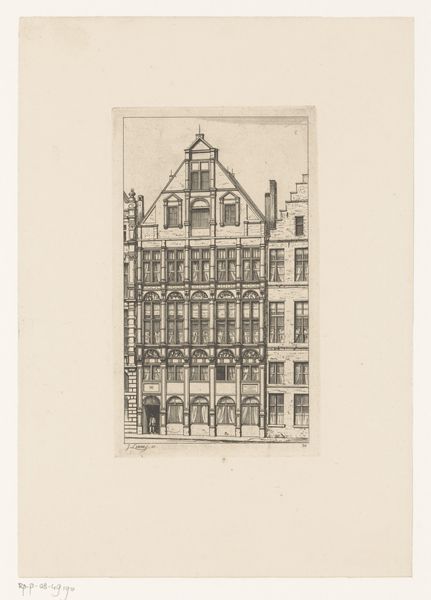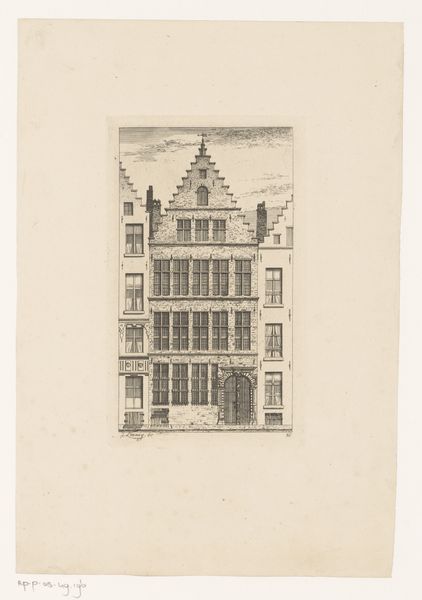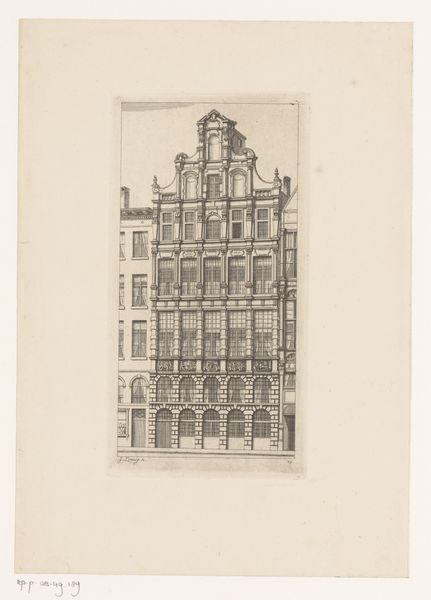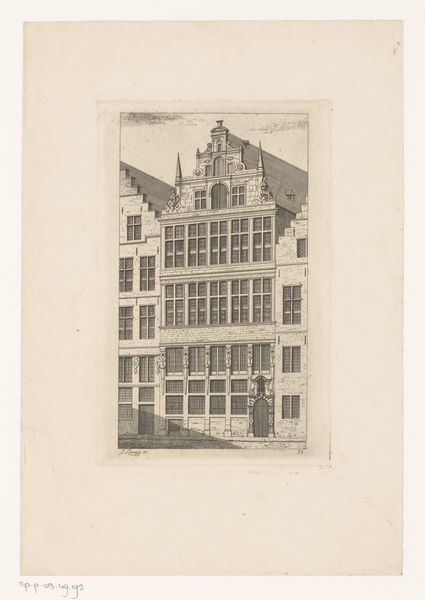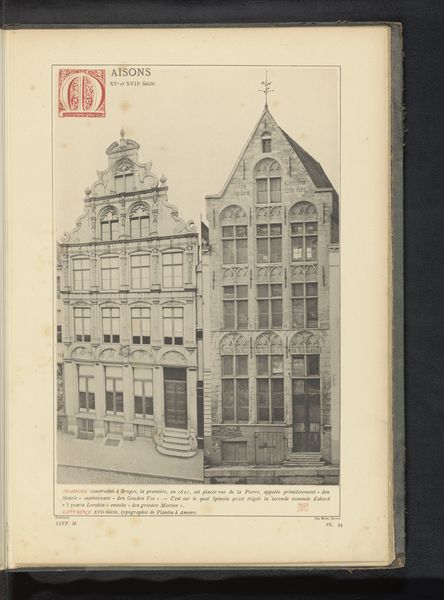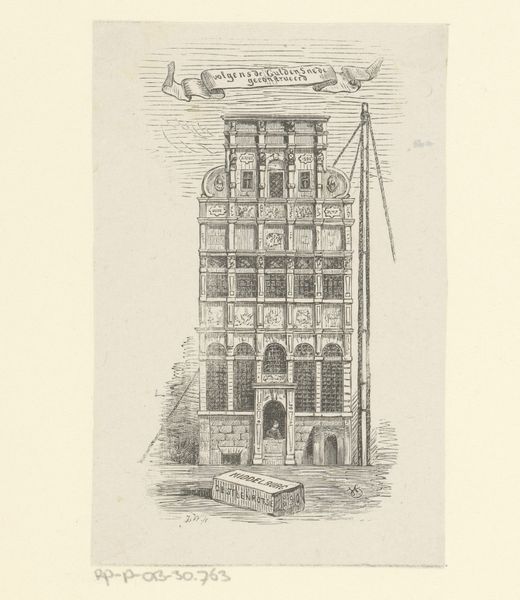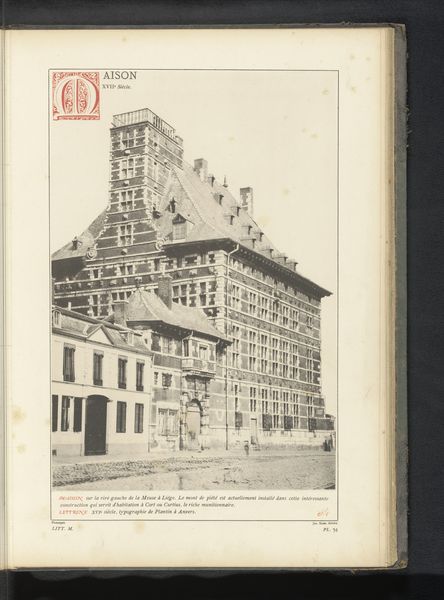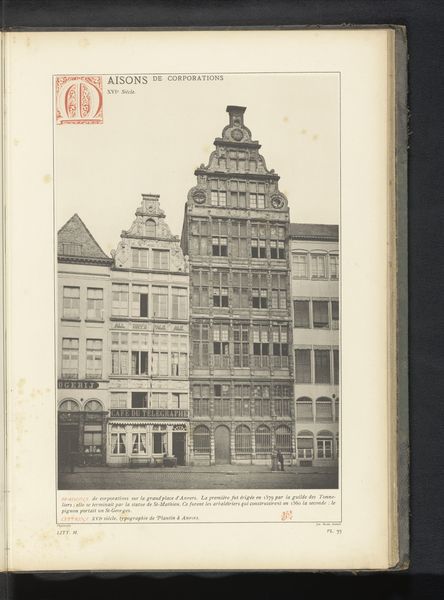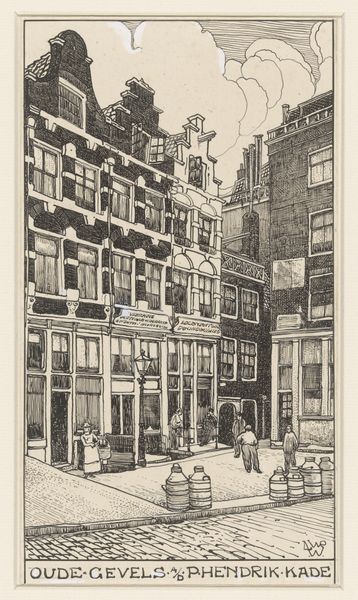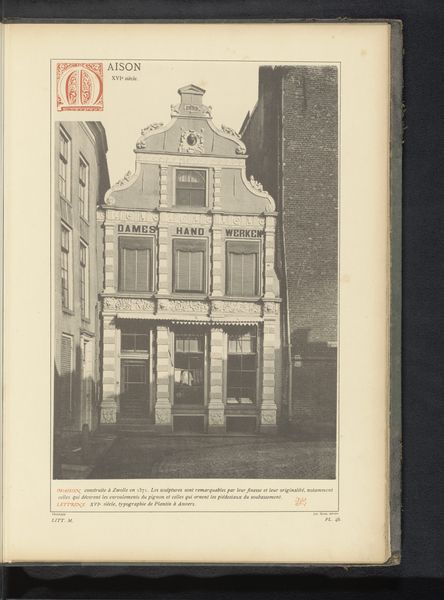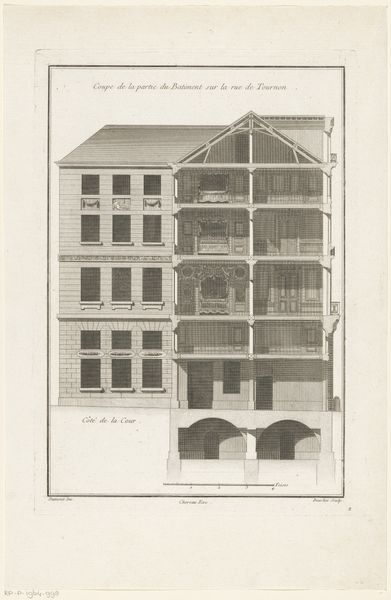
Gezicht op het Sint-Joris gildehuis van het gilde van de Oude Voetboog, op de Grote Markt in Antwerpen 1868
0:00
0:00
drawing, print, etching, paper
#
drawing
# print
#
etching
#
paper
#
cityscape
#
street
#
realism
#
building
Dimensions: height 206 mm, width 103 mm
Copyright: Rijks Museum: Open Domain
Curator: Look at the level of detail in this etching. Titled “Gezicht op het Sint-Joris gildehuis van het gilde van de Oude Voetboog, op de Grote Markt in Antwerpen” it was produced in 1868 by Jean Théodore Joseph Linnig, a Belgian artist. Editor: My initial reaction is one of being dwarfed. The buildings seem so imposing, and the sheer number of windows is staggering! Curator: Indeed. What fascinates me is Linnig's process here. The labor involved in creating such intricate details via etching—the patient application of acid to the metal plate, the choices in paper... It speaks volumes about the value placed on craft. And how the very materials and repetitive processes of creating prints allows these city views to reach a wide audience and almost democratize their images. Editor: That's a valid point. These guild houses were symbols of power and wealth. Linnig's choice to depict them, and in such a precise, almost documentary manner, reflects the burgeoning civic pride and perhaps a desire to preserve these landmarks amidst rapid urban change. These prints became powerful tools in shaping public perception of urban development and national identity. Curator: Exactly! The very act of representing these buildings—the labor involved—becomes a kind of homage to the skilled craftspeople who originally built them and also calls to our attention the work necessary to memorialize culture and civic life through art. Consider, also, how paper was manufactured in that period. Editor: And this wasn’t simply documentation, was it? Note the subtle, theatrical staging; with how Linnig’s eye creates a drama of shadows on stone—not merely records the surfaces of facades. The angle itself, a low vantage point, reinforces that feeling of being overwhelmed. And it’s not hard to see how this depiction affects not only the identity and perception of Antwerp citizens, but also, the foreign tourist who purchases the artwork as a token and monument to their trip. Curator: Yes, so the intersection of artistic labor, material production and consumerism cannot be overstated in these urban scenes! Editor: This artwork demonstrates the important and complex relationship between public perception and visual representation and it serves as a window onto not just a cityscape, but the social and cultural values of 19th century Antwerp. Curator: Ultimately, this etching allows us to think about who had the resources and capacity to create artwork as material for the population's cultural enrichment. Editor: Indeed. It asks us to examine, too, how cities carefully curate and promote themselves for diverse social and commercial opportunities through its iconic imagery, and through the narratives told in print media.
Comments
No comments
Be the first to comment and join the conversation on the ultimate creative platform.
